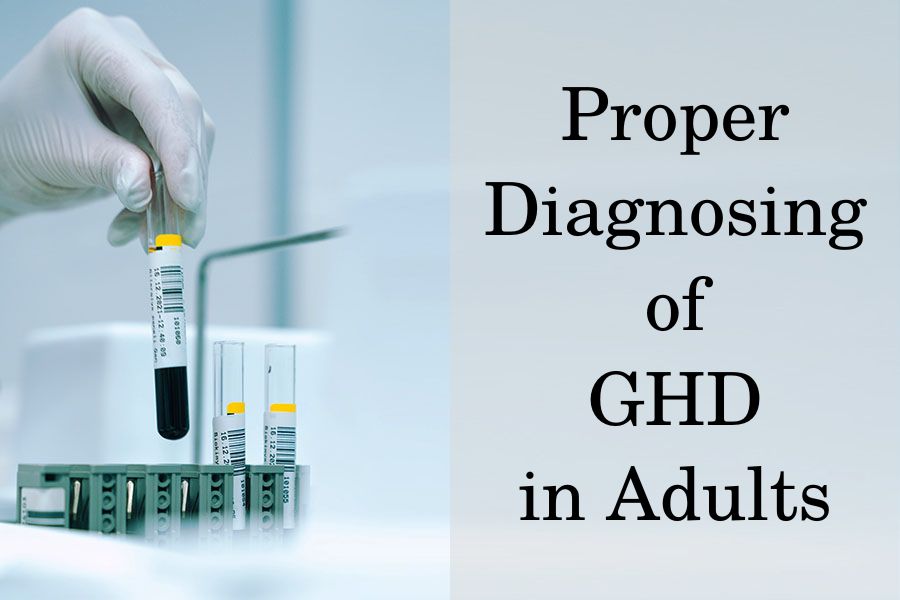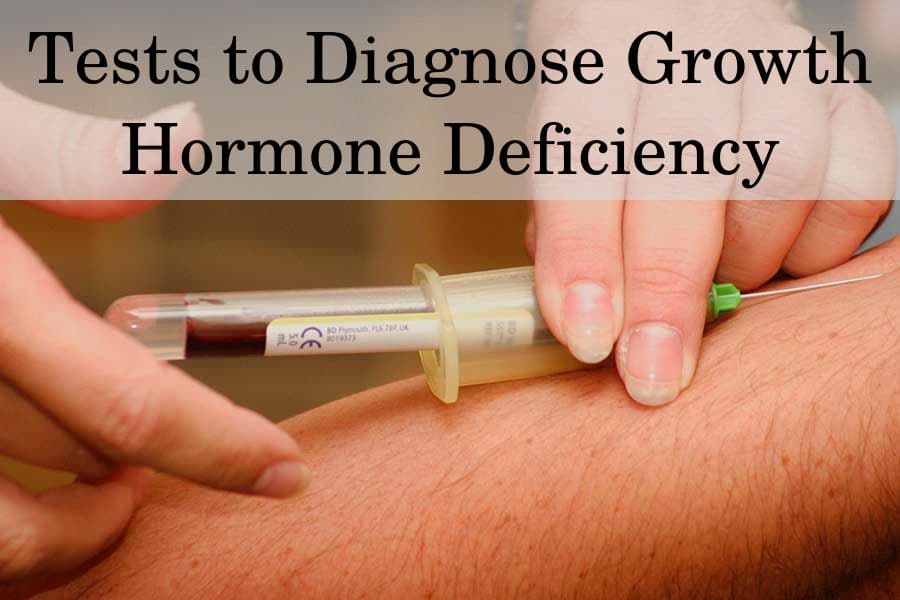Receiving a correct diagnosis is of utmost importance for the proper treatment of adults with growth hormone deficiency (GHD).
Currently, the only effective treatment involves daily injections of recombinant growth hormone (HGH). What is more, you will need to go through a process involving a medical exam, tests, diagnosis, and a prescription in order to receive legal therapy.
Unfortunately, the diagnostic process is more complicated for adult-onset GHD, compared to diagnosing deficiency that occurred in childhood. That’s because adult GHD lacks the hallmark symptom of the condition – stunted growth.
As growth is already complete in adults, GHD manifests with other less specific but quite debilitating complaints such as chronic fatigue, muscle loss, sexual problems, and even elevated cardiovascular risk.
Therefore, getting an accurate diagnosis is important to get a prescription and receive legal treatment for the timely management of GHD symptoms.
Our approach to diagnosing GHD in adults
Although adult-onset GHD has mostly unspecific symptoms and is often neglected as a diagnostic option, there are still some indicators that may suggest you have a deficiency.
For example, the most common symptoms that you may have noticed if you have GHD include:
- Increased body fat around the waist
- Reduced muscle mass and strength
- Chronic fatigue and low exercise capacity
- Dyslipidemia and cardiac dysfunction
- Low bone mineral density
Our doctors will pay special attention to whether you have a history of conditions that may affect the function of your pituitary gland. That’s because you are likely to develop GHD if you have a history of pituitary tumors, brain injuries, stroke, infection of the nervous system, brain hemorrhage, etc.
If a doctor suspects that you have GHD, you will have to undergo testing to confirm the diagnosis
However, a simple blood test will not be enough to diagnose you with GHD. That’s because the hormone is produced in pulses and its levels may vary anywhere between 0 to 10 ng/ml in healthy men and 0 to 15 ng/ml in healthy women.
The tests which you will undergo for GHD diagnosis are called provocation tests as they provoke a peak in growth hormone levels. These tests require you to visit a specialized clinic.
Our clinic provides simple and safe testing, and the whole procedure can be summarized in the following steps:
- Preparation. You are not allowed to consume anything but plain water for at least 8-10 hours before the test.
- Visit. A medical team will prepare you by performing ECG, weight measurements, and an overall exam. They will also explain any potential side effects you may experience.
- Testing. While under medical supervision, you will receive a medication that will provoke a peak in HGH synthesis. Then the medical team will draw blood several times in the next minutes and measure the changes in your serum HGH levels.
- Results. If you have GHD, the medication won’t be able to cause a significant spike in HGH levels. The exact cut-off point for the diagnosis will depend on the specific medication used.
How to prepare for a test
The test for GHD must be performed in the morning, after an overnight fast. Therefore, you should avoid consuming any food after your dinner on the day before the test. This includes skipping breakfast on the day of the test.
Then the medical team will prepare you by measuring your blood pressure, performing an ECG, and investigating whether you may have any comorbidities or contraindications against HGH provocation tests.
How long does a test take?
Blood is drawn for measurements of serum GH levels at 30, 45, 60, and 90 minutes after the application of the medication. Peak serum GH levels usually occur between 45-60 mins while the whole procedure may take anywhere between 2 and 5 hours.
What is the best test to diagnose GHD in adults?
The most specific, accurate, and commonly used medication for HGH provocation testing is insulin. The test is also called the Insulin Tolerance Test (ITT) and it is considered to be the gold standard for diagnosing GHD.
ITT works by lowering your blood sugar levels down to a level that triggers a stress response from the pituitary gland and it releases more HGH. Normally, GH levels should peak above 5.1 ng/ml following the ITT.
Yet, if you have any contraindications for ITT, the medical team may decide to use another test instead such as the Glucagon Stimulation Test (GST) or the Macimorelin Test.
Below you will discover a comparison of the different types of provocation testing that outlines their advantages and disadvantages:
|
ITT |
GST |
Macimorelin |
|
| Availability | Available in all HRT clinics | Available in most HRT clinics | Available in some HRT clinics |
| Safety | Safe when performed in medical settings | Safe when performed in medical settings | Safe when performed in medical settings |
| Accuracy | Highest accuracy | Inaccurate in obese individuals and those with insulin resistance | It may be less accurate in obese patients |
| Contraindications | advanced age (55 or above), heart disease, epilepsy | malnourishment, prolonged fasting (>48h), hypoglycemia | therapy with QT-prolonging drugs |
| Mechanism | Must lower blood sugar levels down to 2.2 mmol/l (40 mg/dl) | The mechanism by which glucagon works is unknown. | Triggers the ghrelin receptors in the pituitary gland |
| Protocol | Applied via injection in doses 0.05-0.1 units/kg for non-diabetic patients | Applied via injection in doses of 1.0 mg if patient body weight ≤ 90 kg and 1.5 mg if patient body weight > 90 kg | Taken orally in doses of 0.5 mg/kg |
| Cut-off point | HGH<5.1 ng/ml indicates GHD | HGH<3.1 ng/ml indicates GHD in patients with normal weight and insulin sensitivity; HGH<1.1 ng/ml indicates GHD in patients with obesity | HGH<2.9 ng/ml indicates GHD |
About GH test results
Our experienced medical doctors will interpret your results according to the specific provocation test used as well as other factors that may affect the accuracy of your results.
The main factors potentially affecting the accuracy of the test may include your body weight and insulin sensitivity. These will be accounted for either by increasing the dose of the medication or adjusting the cut-off value.
The cut-off point which indicates GHD during the ITT is HGH levels remaining under 5.1 ng/ml. For the GST, the cut-off values are HGH levels under 3.1 ng/ml in patients with normal weight and insulin sensitivity while HGH<1.1 ng/ml indicates GHD in patients with obesity. For the Macimorelin test, HGH levels under 2.9 ng/ml indicate GHD.
Normal ranges for GH levels in men (18 years and older) are between 0.01-2.47 ng/mL, and in women (18 years and older) – 0.13-9.88 ng/mL. While peak GH levels in adults can be around 5 ng/mL in men and 10 ng/ml in women.
What happens if growth hormone deficiency is not treated?
If your GH levels remain under the cut-off values during the provocation test, this indicates that you may have GHD. In such cases, it is important to receive timely and adequate treatment, as GHD can affect both the quality and the length of your life.
For example, scientists from England and Wales reveal that the quality of life in patients with GHD is significantly impaired compared to the general healthy population.
Furthermore, researchers from Denmark report that patients with GH deficiency have shorter life expectancy compared to those with normal HGH levels. The increased mortality in GHD is mainly related to the increased risk of cardiovascular dysfunction and complications such as chronic heart disease.
What is more, patients with GHD tend to accumulate a lot of abdominal fat which is a risk factor for high cholesterol levels, hypertension, atherosclerosis, and metabolic diseases.
Currently, HGH therapy is the only effective and medically approved therapy for GHD. Studies show that the treatment can improve both the quality of life and the life expectancy of patients with pituitary dysfunction compared to those left untreated.



 Request Appointment
Request Appointment



